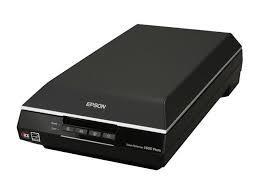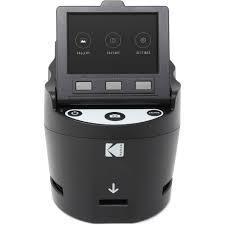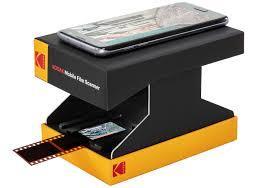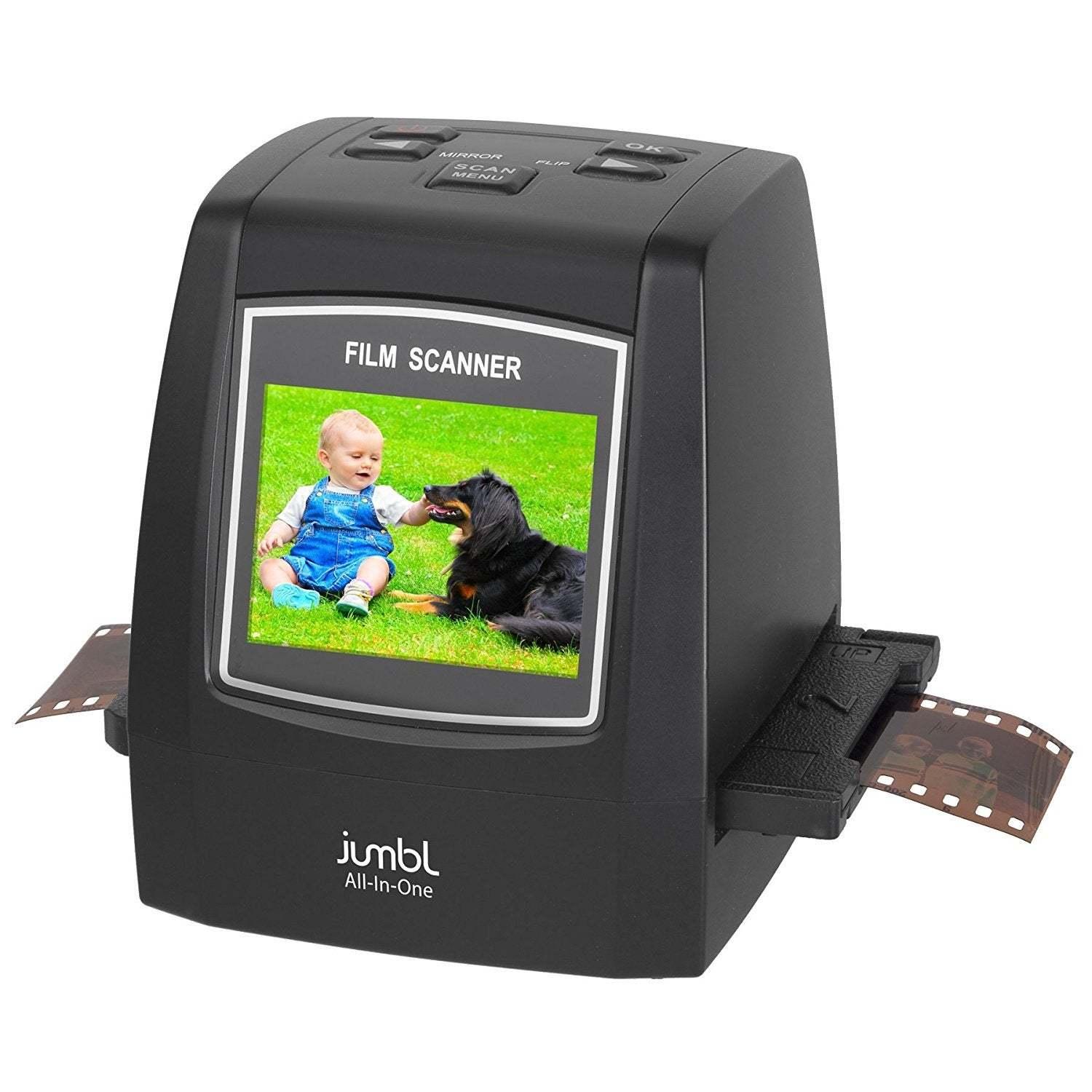
With such a specific job, finding a good slide scanner can be a little hard to do.But if you’re an avid photographer that prefers the old-school analog 35mm camera, you’ll understand the importance of getting the best slide scanner for digitizing your negatives.Their prices vary greatly depending on the quality and speed, so you have to set a budget before you dive into the options to narrow them down a little.
Comparison Table
Printer | Scan Resolution | Computer Connectivity | Weight (pounds) |
|---|---|---|---|
Epson Perfection V600 | 6400 DPI | Required | 9 |
Kodak Scanza | 14 MP | Optional | 1 |
Jumbl 22MP All-in-1 | 22 MP | Optional | 0.55 |
Wolverine Titan 8-in-1 | 20 MP | Optional | 1 |
Plustek OpticFilm 135 | 3600 DPI | Required | 3.5 |
The 6 Best Slide Scanners in 2020
1. Epson Perfection V600 – The Best 35mm Slide Scanner




The Epson Perfection V600 is a great 35mm slide scanner that also works for converting medium-format slides, film, and prints into digital files of high-resolution.
It can reach a 6400 DPI resolution even when making 11 x 22-inch enlargements.
You can scan four 35 mm mounted slides or 12 negatives with the help of its built-in transparency unit.
Moreover, the Epson Perfection V600 can handle a medium-format film of up to 6 x 22 centimeters as well as 8.5 x 11.7-inch documents.
With no need to warm up your device before work, you’ll get a combination of fast scans and low power consumption.
This is thanks to Epson’s ReadyScan LED technology that makes the device quite energy-efficient.
Furthermore, the Epson Perfection V600 comes with four buttons that you can customize to get more straightforward and personalized control over your unit.
Finally, the Epson Perfection V600 is equipped with Digital ICE technology which removes dust and scratches alongside a bundle that creates a clearer and more accurate digital output. لعب اون لاين
To improve your image, you can use ArcSoft PhotoStudio. And to restore faded images, you can use the Easy Photo Fix.
Pros:
- Good scan quality
- Capable of scanning photos and film negatives
- Great OCR results
- Digital ICE dust removal
Cons:
- Prints long documents very slowly
- Lacks native text recognition
Bottom line:
Although the Epson Perfection V600 produces very accurate photo scans, it’s not the best at photo enhancements. However, for a slide and negative scanner of that price tag, it’s pretty great.
2. Kodak Scanza Film & Negative Scanner




The Kodak Scanza comes with three inserts and three adapter trays to give you the maximum range of compatibility. It’s a pretty amazing standalone slide to digital converter on its own.
Other than 8mm negatives and slides, it can also scan and save 35mm, 126, 110, and super eight ones.
Not only that, but it’s also equipped with a simple horizontal slot for loading and enables the user to adjust the color and brightness as the scanning takes place.
The final output comes in an optical resolution of 14 MP but can be interpolated up to 22 MP.
You have full control over the process through the tiltable 3. تكساس هولدم بوكر 5-inch LCD color screen and three soft keys.
It was quite easy to send my files directly to my computer through the USB 2.0 port or save them to an optional SD card.
Another option is just to connect the HDMI and video-out cables to get a slideshow on the unit itself.
Moreover, it doesn’t limit its features to a particular as it’s also compatible with macOS –making it a good slide scanner for mac users as well.
Pros:
- Simple and easy to use
- Fast scanning
- Works without a computer
Cons:
- Subpar resolution
- Only saves JPEGs
Bottom line:
The Kodak Scanza is an excellent film and slide scanner if you’re going to need your output in JPEGs. Otherwise, I found it a little overpriced for its features.
3. Jumbl 22MP All-in-One Film & Slide Scanner




The Jumbl is undoubtedly one of the best slide scanners you can get on the market.
It’s a very affordable option that scans at a 22 MP resolution –one of the highest on the market.
Although the 2.4-inch LCD screen is a little too narrow for visibility, it’s still good enough. بلاك جاك 21
The Jumbl can scan 35mm, 110, 126, and Super 8 slides and negatives. Personally, I thought this was impressive on such an affordable unit.
Moreover, the fact that you can scan and convert images without a computer connection makes the operation quite easy. You can save images to the SD card and then transfer them to your PC later on.
Pros:
- Internal memory to work as a standalone unit
- High MP resolution
- Very easy to use
- Affordable price
- Comes with speed loaders
Cons:
- Small LCD screen
- Doesn’t scan medium format negatives
Bottom line:
What makes the Jumbl a good scanner for slides is the fact that it has one of the best resolutions you can find on the market at a very affordable price. Which makes up for the small screen and limited formats.
4. Wolverine Titan 8-in-1 – A Great Photo and Slide Scanner




With the Wolverine Titan, digitizing negatives, slides, and 8mm movies is a piece of cake.
It’s pretty versatile as it works with 35mm, 110, 127, 126, and APS format films as well as 8mm and Super 8 movies.
And not only is it versatile, but it also gives you high-quality 5472 x 3648-pixel resolution output with its 20 MP sensor. The biggest advantage is it does so in only 3 seconds.
On top of that, it has a huge 4.3-inch color LCD screen that allows you to adjust brightness and color balance settings according to your preferences.
Like most slide scanners, it only saves in JPEG format. But the good part is that you can save your images to either the internal memory or the optional SD/SDHC memory card.s
You also get the option to connect it to a computer through the mini-USB port or view the output directly on a TV through HDMI.
Pros:
- Large 4.3-inch display makes viewing and editing your scans a breeze
- Easy to maintain
- Comes with a USB adapter and cable
Cons:
- Can’t convert physical prints
Bottom line:
All-in-all, the Wolverine Titan is one of the best photo and slide scanners I’ve come across. It just seems to combine everything: resolution, connectivity, speed, and affordability.
5. Kodak Mobile Film Scanner –




The cheapest and easiest way to turn your 35mm negatives and slides into digital images is none but the Kodak Mobile Film Scanner.
It comes at less than 50 bucks and only requires the use of a smartphone and some AA batteries.
There’s a foldable cardboard stand for your phone, a base on which you insert your 35mm negatives or slides, and an LED backlight.
Using the Kodak Mobile Film Scanner app –which is available for both Android and iOS), you can digitize your old films with a tap on the screen.
Basically, the KODAK Mobile Film Scanner to film scanning is what Google Cardboard is to virtual reality.
However, you shouldn’t expect professional-looking images out of this simple device.
I mean, you do get scanning color negative, color positive, and B&W negative, but with a limited resolution.
Once you take the pictures of your film, you can do some post-processing on the digital file by modifying contrast and exposure or adding vignetting, text, stickers, or borders.
Pros:
- Simplest operation
- Various built-in editing and sharing tools
- The easiest way to recover negatives
Cons:
- Considerably lower quality
- Slow action especially with many rolls
Bottom line:
To be fair, the Kodak Mobile Film Scanner isn’t the top-notch choice on the list, but it does have a lot to offer that none of the other options are capable of.
For an amateur hobbyist, this entry-level slide negative scanner is the best tool for bringing their memories back on screen.
6. Plustek OpticFilm 135 – A Professional 35mm Slide and Negative Film Scanner




The Plustek OpticFilm 135 is capable of scanning 35mm slides and negatives at a 3600 DPI resolution.
Combining a Dmax of 3.4 and 48-bit color depth, you’ll surely get some neat and long-lasting results. لعبة الروليت المجانيه
Personally, what I found unique and beneficial about the Plustek OpticFilm 135 is that it can automatically handle batches of scans as it comes with a mode of motorized transport.
With a USB 2.0 interface for computer connectivity and three one-touch buttons, you’ll be able to handle its operation seamlessly.
Moreover, the Plustek OpticFilm 135 comes with Plustek QuickScan Plus software to enable you to scan and edit images easily.
And the best part is that you can convert your negatives and slides into JPG, TIFF, and BMP. بوكر حقيقي Unlike many slide scanners, the Plustek OpticFilm 135 doesn’t limit you to just JPEG.
On top of that, you can work with a photo of a size up to 12 x 17 inches at a 17.3 MP resolution.
Finally, you can upload images directly to social networks, including Flickr, Facebook, and Twitter.
Pros:
- High-resolution scanning
- Fast performance and incredible scanning speed
- Comes with its software to spare you the need to use third-party ones
- Easy to set up and use
- Shares directly to social networks
Cons:
- Quite expensive
- Limited pre-scan customization options
Bottom line:
The Plustek OpticFilm 135 is directed at professional-level slide and negatives digitization. While it does come with a hefty price tag, it gives you the best quality and performance out there.
How to Pick a Good Slide Scanner?
Media
An entry-level scanner will probably support nothing but 35mm film strips. So if you’re a professional that’s looking for more options, you should make sure you get a model that can handle the specific media you’ll be scanning.
Resolution
The higher the resolution, the better your scanned images will look, and naturally, the higher the price of your device will be.
There’s no need to spend extra money if you’re bringing back memories from the past. You can go for a 300 to 1200 DPI model.
However, if you’re doing professional work and expect top-notch results, you shouldn’t settle for less than 3200 DPI.
Bit Depth
The bit depth has a significant impact on the color accuracy of your scans.
24-bit depth is suitable for non-professional use. However, for professional results, you should look for 30-bit models and higher.
What Is a Slide Scanner?
A slide scanner is a specialty scanner that allows you to digitize 35mm slides and film negatives.
And because they have particular functions, they’re neither very versatile nor do they provide a lot of utility to the user.
How Does a Slide Scanner Work?
Slide scanners use the same mechanism as standard ones. betway
A slide, negative, or 35mm film is inserted into the slot or placed on top of the glass panel.
A light beam scans the surface and records the details of the images like color and intensity.
Finally, CCD (charged coupled device) sensors capture this information and store it as digital data.
Final Thoughts
While your choice highly depends on the purpose behind buying the scanner, there are some recommendations.
For the best resolution and top-notch results, go for the Plustek’s OpticFilm 135. Although it’s not the most affordable, none of the others can give you half as great results for professional final results.
On the other hand, if you’re reviving some old memories, you shouldn’t go big, and the KODAK Mobile Film Scanner or Jumbl 22MP All-in-1 would do an adequate job.
If you want a taste of all the right features and the overall best slide scanner, you can’t go wrong with the Wolverine Titan 8-in-1.
